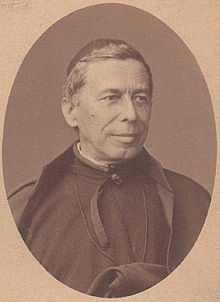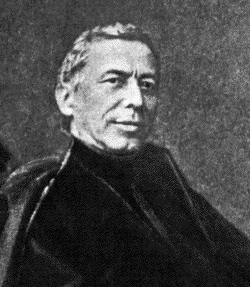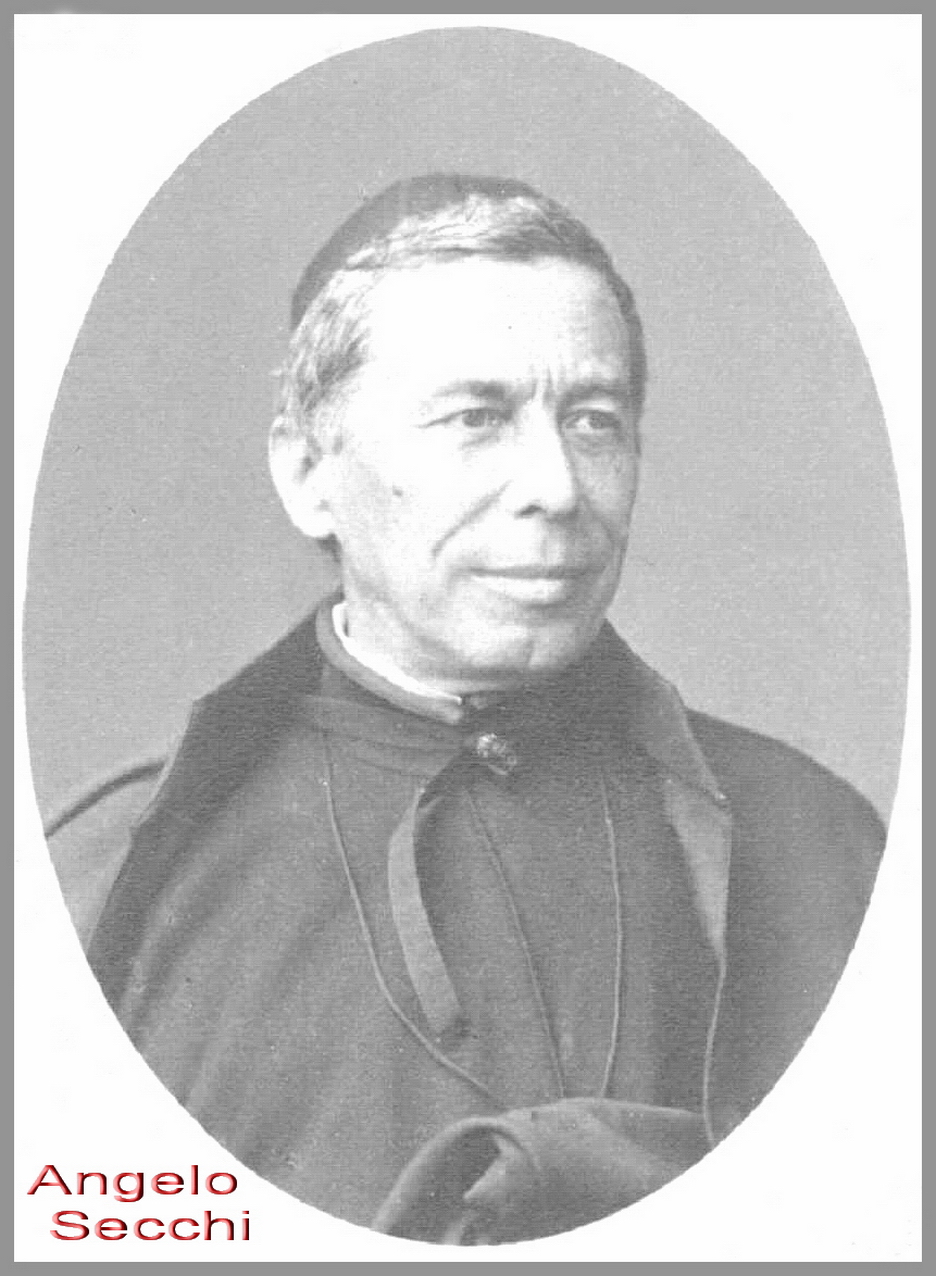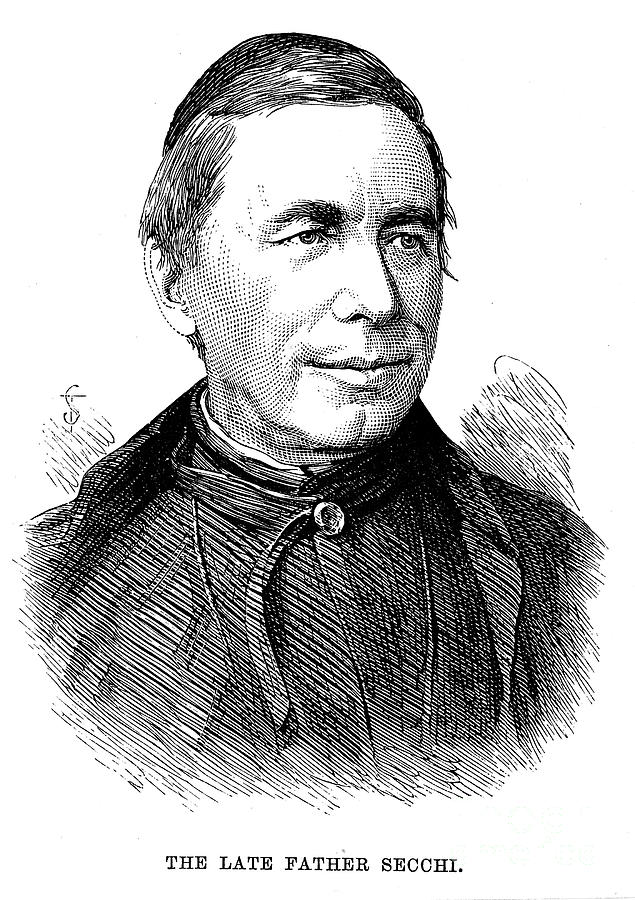Angelo Secchi
Pietro Angelo Secchi ( born June 29, 1818 in Reggio Emilia, Italy, † February 26, 1878 in Rome ) was an Italian Jesuit priest, physicist and astronomer. As head of the Vatican Observatory, he explored the solar corona and in 1867 the different spectra of many bright stars. Through their initial systematic classification Father Secchi was a pioneer in the spectral analysis.
Training
The son of a carpenter should first cutter, but could at the Jesuit high school soon show its suitability for scientists. Even with 15 ½ years, he became a novice in the Jesuit Order with 17 student at the Collegio Romano. There he was given the opportunity to study astronomy in addition to the religious formation.
At the time of the revolutionary Roman Republic Rome, the Jesuits were forced to leave the city and Secchi went with some of his teachers into exile. During this time he worked at the observatories of Stonyhurst in England and the Georgetown College in Washington, DC, in the United States. On his return to Rome, he took over in 1850 the management of the Vatican Observatory at the Collegio Romano ( Gregorian ).
Pioneer of astrophysics
Kirchhoff and Bunsen discovered in 1859 that various chemical elements color the flame of a gas burner in a characteristic way, and so could the Fraunhofer lines in the solar spectrum explain. When he learned of this, Secchi began to disassemble the difficult task, even the light from stars with prisms in their color spectrum. The distribution of the color pattern and dark absorption lines he determined the chemical composition of the solar and stellar atmosphere. In 1867 he put the art before a directory of over 500 examined fixed stars, in which he first divided the spectra into three classes:
1 white stars (prototype Vega ), 2 " colored " (like the sun), 3 blue stars, and supplemented this scale two years later to the Type IV: " ... some very strange stars, which usually a blood-red own color and very low brightness have [ ..] but their lines are very lively ... ". According to current classification, it is the carbon stars. In his textbook The stars Secchi developed another type V for stars with strong hydrogen lines.
Secchis research in this area was - similar to those of William Huggins - ground breaking and he is with Huggins as the pioneer of spectroscopy. In other works he saw in the star types I and II differences in density and temperature and guessed correctly that type III and IV would be cooler. Its scale was adapted in 1874 by Hermann Carl Vogel something and was the basis for the later ( still valid today ) Harvard classification OBAFGKM.
Additional research topics
Secchis working themes were initially the observation of sunspots, prominences and the development of Heliospektrografen. At the eclipse of 1860 he succeeded the first photographic record of the solar corona. He also dealt with the influence of the Sun on the Earth's atmosphere and their electrical phenomena, as well as with the earth's magnetism and meteorology.
He also studied the light transmission in the Mediterranean, for which he developed a special measuring method. Invented by him Secchischeibe still finds in applied limnology use.
Given its broad scientific interests and research spectrum, which he still supplemented by studies of philosophy, Angelo Secchi can be seen from the priest astronomers as a modern representative of the ancient guild.
In his honor, a 22 km diameter crater have been named on the moon, and a 50 km long mountain range, the Montes Secchi. The Jesuit astronomer is also the discoverer of comet C/1853 E1 named after him.
Literature and links
- Günter D. Roth: cosmos astronomy history: astronomers, instruments, discoveries. Kosmos Verlag, Stuttgart 1987
- Angelo Secchi S. J., the Father of Astrophysics
- Publications by Secchi in the Astrophysics Data System
- Obituaries on Secchi in the Astrophysics Data System
- Astronomer (19th century)
- Limnologist
- Roman Catholic priest (19th century)
- Jesuit
- Italian
- Born in 1818
- Died in 1878
- Man










